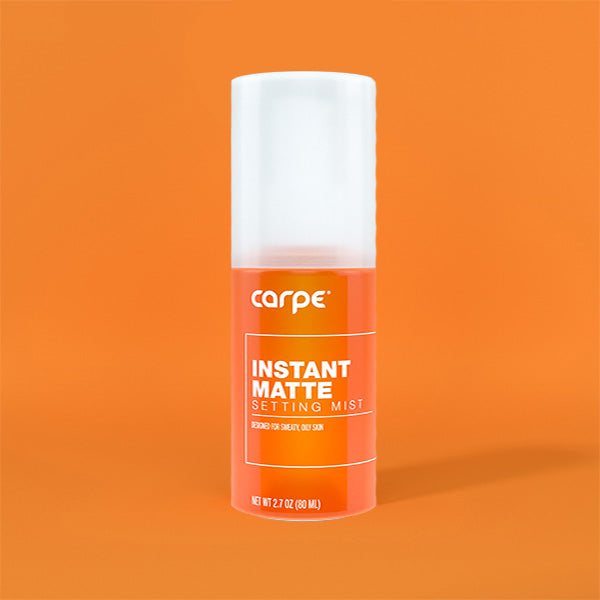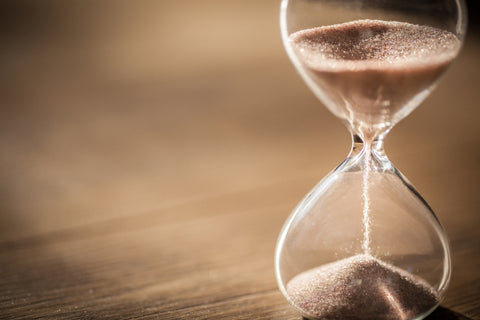Hyperhidrosis is a condition that causes a person to sweat excessively even in the absence of environmental triggers like heat. It can be an embarrassing condition that affects an estimated 5% of the world’s population.[1] For some, over-the-counter topical treatments help reduce the excessive sweating caused by hyperhidrosis, while others may need a stronger solution. If you have tried over-the-counter solutions and other methods to manage hyperhidrosis at home and they aren't working, it may be time to talk to your physician about medical treatments. While hyperhidrosis is not dangerous, it can have a negative impact on your quality of life. Dermatologists are the best doctors to treat hyperhidrosis. They are able to provide a personalized plan that can address each person’s specific needs.[1]
Find a Qualified Hyperhidrosis Dermatologist
Before attempting to self-assess what prescription or treatment will work best for you, It is recommended that you find a qualified hyperhidrosis dermatologist. It is important that the dermatologist you choose has specific experience in treating hyperhidrosis. Your general practitioner can refer you to the right type of doctor if you are unsure of where to go next. You can also find out information through your health insurance company and read reviews online. A doctor might help you to choose the right over-the-counter antiperspirant, or they might decide that you need something stronger to help you control your sweat.[1]
Prescriptions
Your hyperhidrosis dermatologist may provide you with a prescription for a topical cream or an oral medication to treat hyperhidrosis. Depending on your specific situation, you may be prescribed both a topical cream and an anticholinergic pill to alleviate your sweating. Often doctors prescribe anticholinergic medications like glycopyrrolate and oxybutynin to treat excessive sweating, but there are other types of medications for hyperhidrosis that a doctor may prescribe.[1]
Topical Creams
Hyperhidrosis dermatologists will often prescribe patients a topical cream that consists of a sweat-blocking aluminum solution paired with a series of moisturizing elements. These solutions both reduce the amount of sweat your pores produce and ensure the aluminum elements do not irritate your skin. Notably, aluminum chloride, aluminum sesquichlorohydrate, and aluminum zirconium are the three most common aluminum compounds that are used in these solutions.[2] When applied to skin, the aluminum element in antiperspirant will enter sweat glands and then break down into smaller chemical compounds once it encounters water beneath the skin. This process is known as hydrolysis. Since the compound will begin to hydrolyze (breakdown) when it encounters water, keeping the surface of your skin dry and clear of debris is essential to make sure an antiperspirant can work properly.[1]
Many hyperhidrosis dermatologists recommend applying antiperspirant at night in order to provide the solution ample time to penetrate your dry and clean skin while you sleep. Antiperspirants can be used all over the body and there are some antiperspirants made for places like the face and groin, which are sensitive and prone to irritation. It is also important to note that antiperspirant is not bad for you as some internet rumors have led people to believe. To date, there have been no studies that have shown that antiperspirant is dangerous, although more research needs to be done.[1]
Anticholinergics
Whether prescribed alongside topical creams or as an independent solution, your dermatologist may prescribe oral medications for hyperhidrosis. The most common type of medication doctors prescribe for this are known as anticholinergics. They stop a signalling chemical known as acetylcholine from delivering messages to certain nerve receptors. Reducing the signals to nerves that supply sweat glands reduces sweat production.[1]
Many scientists believe that excessive sweating is a result of an individual’s genetic tendency to produce more sweat than necessary. [3] Since a person’s genes impact how sweat glands process signals from the nervous system, blocking communication at specific binding sites that control sweat production can help reduce sweat. [3] By blocking these receptors, the sweat glands will not receive the messages from the brain that tell sweat glands to produce excessive sweat.
An easy way to understand the difference between topical aluminum creams and anticholinergics is to think about your skin as a leaky faucet. One way to stop the leak would be to tape over the outside of the faucet so that no water can leak out. Similarly, putting an aluminum cream on the hands blocks the sweat glands and allows less sweat to emerge from the body. A second solution for fixing the leaky faucet would be to decrease the amount of water pressure the faucet receives. Likewise, anticholinergics decrease the amount of signals the sweat glands receive that instruct them to produce sweat.
Iontophoresis Sessions
Iontophoresis is a treatment used to treat palmar (hand) and plantar (foot) hyperhidrosis. It involves delivering a mild electrical current into the hands or feet and it temporarily blocks sweat glands from producing sweat.[4] During iontophoresis sessions, the affected part of the body is placed in water, and electrical currents are administered over a 30-minute period. A patient typically conducts sessions weekly or bi-weekly, and it will often take up to 10 sessions before the patient can detect a notable decrease in sweating.[3] Even though it may take a while to show results, iontophoresis really does work. Since the affected part of the body must be submerged in water during iontophoresis, it is most effective when used as a treatment for sweaty hands and feet. There are ways to make iontophoresis more effective for those who do not receive satisfactory results. Some people who use iontophoresis say they experience an increase in sweating when they first begin treatment, but iontophoresis is not known to make sweating worse. The good news is that, even for those who say they experience worsened sweating, their symptoms improved if the treatment was continued over time.[1][4]
Surgery
If your hyperhidrosis symptoms cannot be reduced via topical creams, prescription medicine, or iontophoresis, your hyperhidrosis dermatologist might recommend a surgical treatment to reduce your sweating. These procedures range from minimally invasive surgeries like as botox injections and local permanent treatments for axillary hyperhidrosis to significantly more invasive procedures like endoscopic thoracic sympathectomies and endoscopic lumbar sympathectomies. [1] Although surgical intervention should only be considered following the failure of less invasive methods, surgery can provide an impressive reduction in excessive sweating in a specific area for the most severe cases of hyperhidrosis.
Botox Injections
Widely known for its association with cosmetic surgeries, botox is a substance with a notable potential to treat hyperhidrosis. Botox is used to treat axillary hyperhidrosis frequently, and it has even received approval from the FDA for that purpose. Botox is also used to treat palmar and plantar hyperhidrosis. When botulinum toxin (botox) is introduced to skin that contains sweat glands, the neurotransmitters that control the messages from the brain to sweat glands are paralyzed. [5] Since botox is actually a very strong toxin that can easily paralyze human cells, botox treatments should be conducted by experienced professionals only. Repeat Botox injections are needed every 6 or 12 months to maintain a reduction in sweat. [5]
Endoscopic Thoracic and Lumbar Sympathectomies
Endoscopic Thoracic (hand) Sympathectomies and Endoscopic Lumbar (foot) Sympathectomies are two procedures that permanently sever the connection between nerves in the spinal cord and sweat glands. This completely stops excessive sweating in problem areas. It is important to note that a hyperhidrosis dermatologist will probably not be the type of doctor performing your surgery, as it will probably require a surgeon.
Although the surgeries typically stop the sweating in a given area, there are three key risks associated with the ETS and ELS surgeries. First, these surgeries are highly invasive. The patient must be put to sleep via anesthetics for the duration of the surgery, and the surgery is quite dangerous compared to other hyperhidrosis treatments. A mistake when operating on the spinal cord could paralyze the patient for life.[6] Second, the surgery can be very expensive. Although costs vary significantly based on personal factors and insurance, paying $5,000 - $10,000 for this type of surgery is not uncommon. Finally, an individual may continue to sweat just as much as they did before the surgery. While the sweat will no longer travel to the same location following surgery, the body may continue to produce sweat through a process known as compensatory sweating.
Since surgery only stops the nerves from sending messages to one area and not the body’s overall sweat production, the sweat that was produced in the hands or feet will be redirected to another spot on the body. [6] These surgeries are irreversible, and should only be considered if your symptoms are severe and no other treatment options has helped reduce your sweat.[6]
There are many potential treatment options for those with hyperhidrosis, but what about children? There are medical treatments for children with hyperhidrosis available, although they are more limited than those available to adults. The medical cost of hyperhidrosis can be high, but it is important for those with the condition to seek out treatment if they feel it is impacting their lives. Hyperhidrosis can have a negative impact on a person's quality of life, so medical treatment should be thought of as an important step for those who are struggling to control their sweat.
The advice in this section is predominately intended for those who have primary focal hyperhidrosis. If you suspect you have secondary generalized hyperhidrosis then you should seek medical care and the focus should, at least initially, be on curing the underlying cause of your sweating. You should always follow the advice of your hyperhidrosis dermatologist and consider their advice when exploring treatment options.
Sources
- Pariser, D. M. (2014). Hyperhidrosis (4th ed., Vol. 32). Amsterdam: Elsevier Pub. Co., 2014. Retrieved from https://www.elsevier.com/books/hyperhidrosis-an-issue-of-dermatologic-clinics/pariser/978-0-323-32607-0
- Kamudoni, P., Mueller, B., Halford, J., Schouveller, A., Stacey, B., & Salek, M. (2017, June 8). The impact of hyperhidrosis on patients' daily life and quality of life: A qualitative investigation. Retrieved May 21, 2018, from https://hqlo.biomedcentral.com/articles/10.1186/s12955-017-0693-x
- Symposium on Anticholinergic Drug and Brain Functions in Animals,and Man. (1968). In Bradley P. B. (Ed.), Anticholinergic drugs and brain functions in animals and man Amsterdam, New York etc.] Elsevier Pub. Co., 1968. Retrieved from https://www.worldcat.org/title/anticholinergic-drugs-and-brain-functions-in-animals-and-man/oclc/681155628
- Scifers, James R, DScPT, PT, SCS,L.A.T., A.T.C., Lewandowski, Jeff, DPT, PT, SCS,A.T.C., M.T.C., O'Brien, Matthew, PhD, LAT, ATC, & Watts, Jay, RPh,F.A.C.A., F.A.C.V.P. (2013). Iontophoresis. Athletic Training & Sports Health Care, 5(3), 103-105. doi:http://dx.doi.org.proxy.lib.duke.edu/10.3928/19425864-20130509-03 Retrieved from https://www.healio.com/orthopedics/journals/atshc/2013-5-5-3
- Melissa A. Doft, MD;, Jeffrey A. Ascherman, MD, & Krista L. Hardy, BS. (2011, July 8). Treatment of Hyperhidrosis With Botulinum Toxin. Retrieved May 21, 2018, from https://www.ncbi.nlm.nih.gov/pubmed/22328694
- Mancini, M., Zieve, D., & Conaway, B. (2017, January 31). Endoscopic Thoracic Sympathectomy. Retrieved May 21, 2018, from https://medlineplus.gov/ency/article/007291.htm






16790753702383.jpg?v=1679075372)

16790746985853.jpg?v=1679074700)


16790757289763.jpg?v=1679075731)












